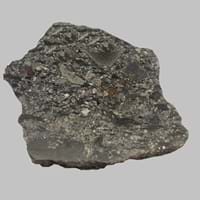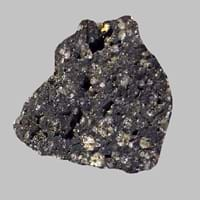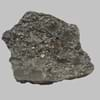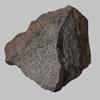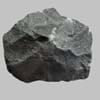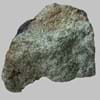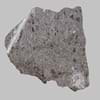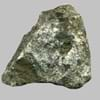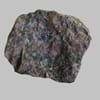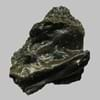Definition
An iron rich extrusive rock found as a member of the alkali basalt magma series
Borolanite is a variety of Nepheline Syenite and belongs to igneous rocks and contains nepheline-alkali feldspar pseudomorphs which occur as conspicuous white spots in the dark rock matrix
Origin
Isle of Mull, Scotland
Scotland
Discoverer
Ben More
Unknown
Etymology
From the name of discoverer, Ben More
From Alkalic Igneous complex near Loch Borralan in northwest Scotland
Class
Igneous Rocks
Igneous Rocks
Sub-Class
Durable Rock, Medium Hardness Rock
Durable Rock, Medium Hardness Rock
Other Categories
Fine Grained Rock, Opaque Rock
Fine Grained Rock, Opaque Rock
Texture
Glassy, Massive, Porphyritic, Scoriaceous, Trachytic, Vesicular
Granular
Color
Black, Brown, Light to Dark Grey
Brown, Buff, Cream, Green, Grey, Pink, White
Durability
Durable
Durable
Appearance
Rough and Dull
Banded and Foilated
Interior Uses
Floor Tiles, Homes, Hotels, Kitchens
Countertops, Decorative Aggregates, Flooring, Homes, Interior Decoration
Exterior Uses
As Building Stone, Paving Stone, Garden Decoration, Office Buildings
As Building Stone, As Facing Stone, Paving Stone, Garden Decoration, Office Buildings
Other Architectural Uses
Curbing
Curbing
Construction Industry
As Dimension Stone, Cobblestones, Rail Track Ballast, Roadstone
As Dimension Stone, Cement Manufacture, Construction Aggregate, for Road Aggregate, Landscaping, Making natural cement, Manufacture of Magnesium and Dolomite Refractories, Production of Glass and Ceramics
Medical Industry
Not Yet Used
Not Yet Used
Antiquity Uses
Artifacts, Monuments, Sculpture
Artifacts
Commercial Uses
Commemorative Tablets, Creating Artwork, Curling
Cemetery Markers
Types
Alkaline Basalt, Boninite, High Alumina Basalt, Mid Ocean Ridge Basalt (MORB) and Tholeiitic Basalt
Not Available
Features
Has High structural resistance against erosion and climate, Very fine grained rock
Application of acids on the surface causes cloudy frosting, Available in Lots of Colors and Patterns, Dissolves in hydrochloric acid, Is one of the oldest rock
Archaeological Significance
Famous Monuments
Data Not Available
Data Not Available
Famous Sculptures
Data Not Available
Data Not Available
Formation
Benmoreite is a type of Igneous rock which is formed through the cooling and solidification of lava or magma. It forms with or without crystallization, either below the surface as intrusive rocks or on the surface as extrusive rocks.
Borolanites are formed due to alkaline igneous activities and are generally formed in thick continental crustal areas or in Cordilleran subduction zones.
Mineral Content
Alkali feldspar, Biotite, Olivine, Plagioclase, Pyroxene, Sodic plagioclase
Albite, Amphibole, Biotite, Cancrinite, Feldspar, Hornblende, Plagioclase, Pyroxene, Sodalite
Compound Content
Aluminium Oxide, CaO, Iron(III) Oxide, FeO, Potassium Oxide, MgO, MnO, Sodium Oxide, Phosphorus Pentoxide, Silicon Dioxide, Titanium Dioxide
Aluminium Oxide, CaO, Iron(III) Oxide, FeO, Potassium Oxide, MgO, MnO, Sodium Oxide, Phosphorus Pentoxide, Silicon Dioxide, Titanium Dioxide
Types of Metamorphism
Burial Metamorphism, Cataclastic Metamorphism, Contact Metamorphism, Hydrothermal Metamorphism, Impact Metamorphism, Regional Metamorphism
Regional Metamorphism
Types of Weathering
Biological Weathering, Chemical Weathering, Mechanical Weathering
Chemical Weathering, Mechanical Weathering
Types of Erosion
Chemical Erosion, Coastal Erosion, Glacier Erosion, Sea Erosion, Water Erosion, Wind Erosion
Wind Erosion
Grain Size
Fine Grained
Fine Grained
Fracture
Conchoidal
Conchoidal to Uneven
Porosity
Less Porous
Less Porous
Luster
Earthy
Greasy to Dull
Toughness
2.3
Not Available
Specific Gravity
2.8-3
2.6
Transparency
Opaque
Translucent to Opaque
Density
2.9-3.1 g/cm3
2.6 g/cm3
Specific Heat Capacity
Not Available
Resistance
Heat Resistant, Pressure Resistant, Wear Resistant
Heat Resistant, Impact Resistant, Wear Resistant
Deposits in Eastern Continents
Asia
India, Russia
Indonesia, Iran, Russia, Saudi Arabia, Sri Lanka, Taiwan, Thailand, Turkey, Turkmenistan, Vietnam
Africa
South Africa
Angola, Egypt, Madagascar, Namibia, Nigeria, South Africa
Europe
Iceland
Andorra, Finland, France, Great Britain, Italy, Norway, Portugal, Spain, Sweden
Others
Not Yet Found
Greenland
Deposits in Western Continents
North America
Canada, USA
Canada, USA
South America
Brazil
Brazil, Chile, Colombia, Uruguay, Venezuela
Deposits in Oceania Continent
Australia
Not Yet Found
New Zealand, Queensland, South Australia, Tasmania, Western Australia
